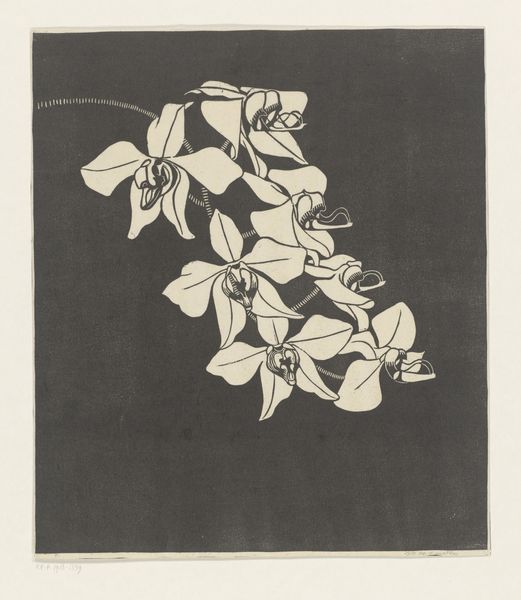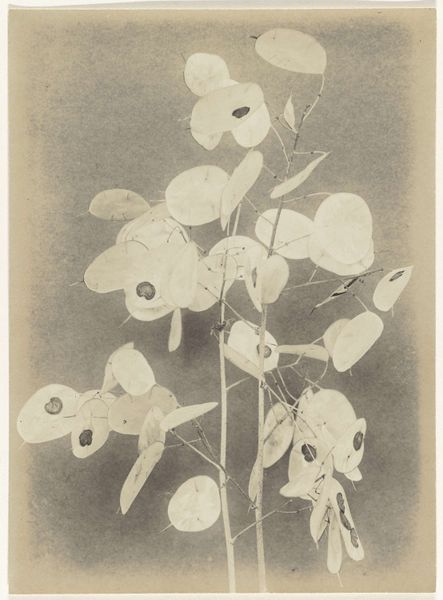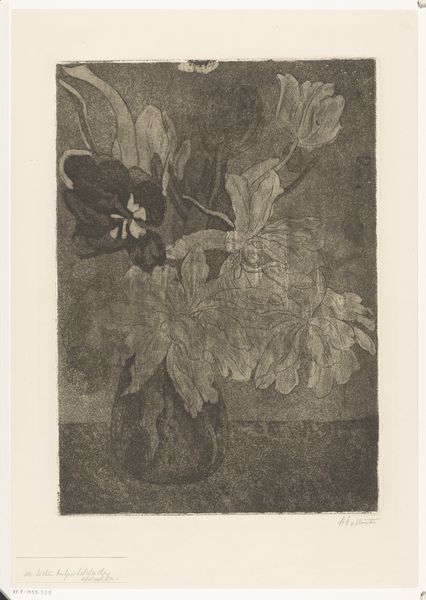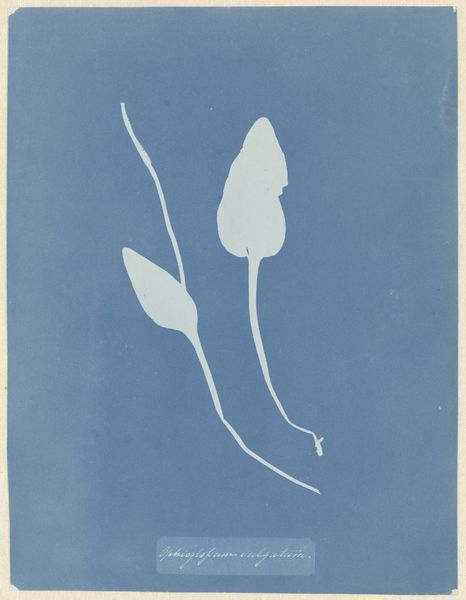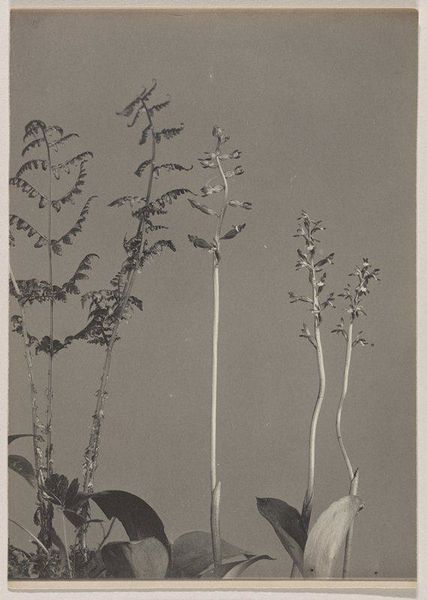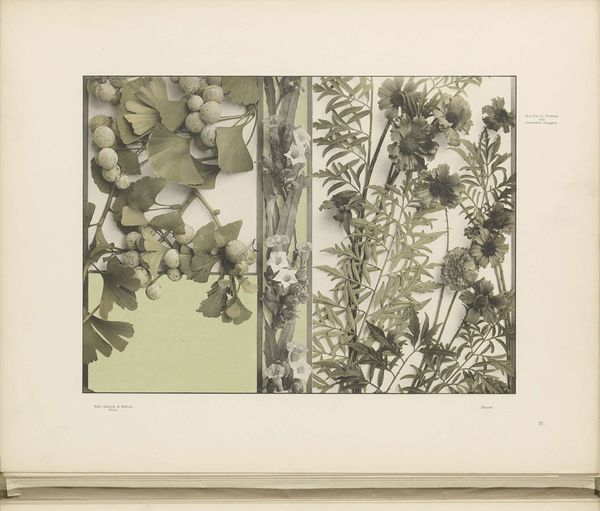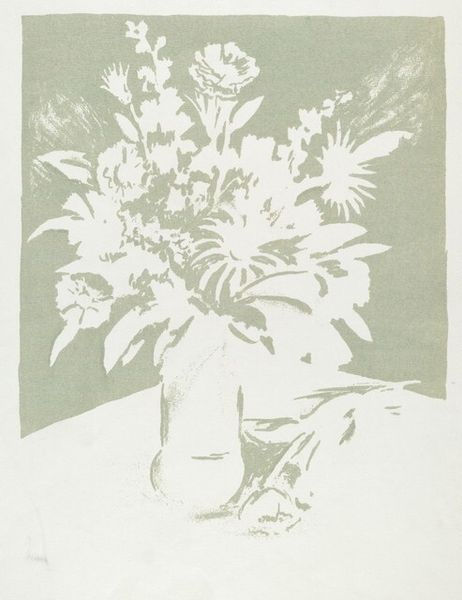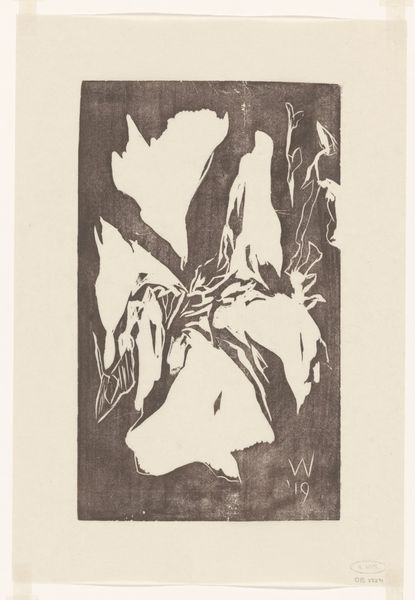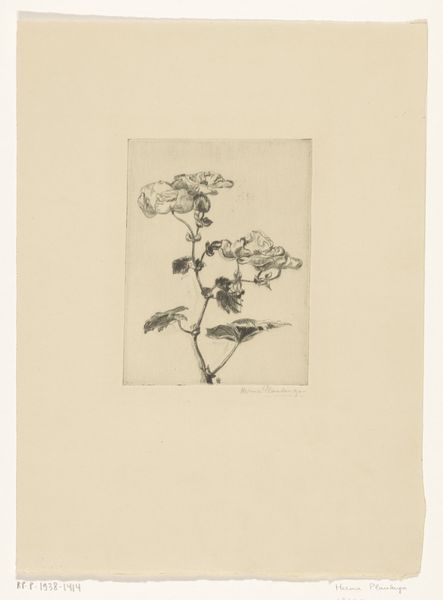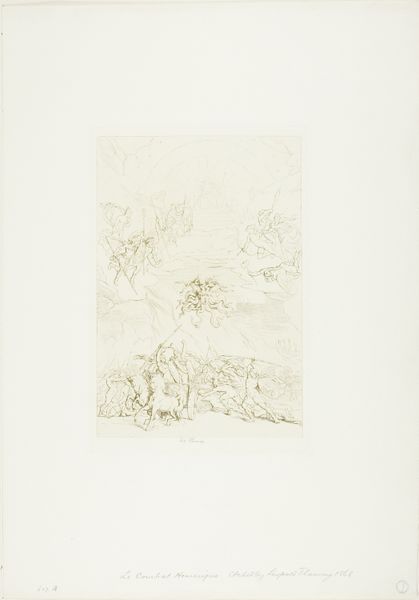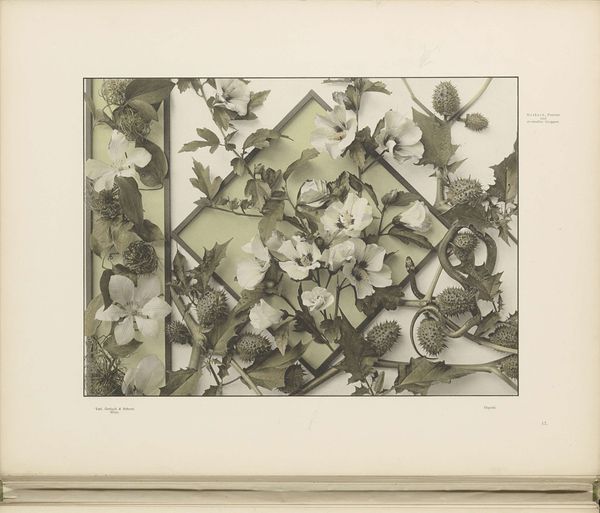
Dimensions: height 414 mm, width 270 mm
Copyright: Rijks Museum: Open Domain
Curator: This print is called "Waterbloemen," or "Water Flowers" by Henri-Charles Guérard, and was likely created between 1856 and 1897. It combines the art nouveau style with the technique of linocut printing. Editor: Immediately, what strikes me is its serene mood. The stark contrast between the soft, creamy whites of the flowers and foliage against the field of olive is wonderfully subdued, almost like a botanical photograph negative. Curator: Indeed. Its composition is really interesting, as the flowers seem to be floating in a field of ambiguity. Guérard, working within the aesthetic parameters of art nouveau, presents us with a piece that encourages consideration of perception versus reality and challenges the viewer to look deeper. Where is the ground, the shore? Editor: I'm fascinated by this idea of "floating." The piece is a print, of course, so let's consider the material. Guérard is working with linocut, a relief printing technique. We’re talking about carving away material to leave the design raised. What labour and what kind of process led to these shapes and forms? Curator: Certainly, understanding the process is key, given the socio-historical moment. Guérard and others like him during this period aimed at democratizing the visual world in a manner, using the print, to broaden its availability to larger audience, given painting were exclusively reserved for those with significant resources and status. Editor: You're right, prints inherently invite notions of the reproducibility and dissemination of artistic ideas to the masses. It shifts our understanding, as materialists, beyond purely aesthetic concerns toward the mechanics and labor practices involved in this printmaking tradition. Curator: And in that widespread visibility, what are its politics? Can one see the theme of abstraction and botanics, to symbolize in what way people related to the natural world, or how new relationships can be formulated using that lens of interaction. Editor: It seems, through this dialogue, we've arrived at a space where art transcends being mere images, instead becoming embedded and deeply connected with cultural and labor practices, which invites us to think critically about their making and social life. Curator: Absolutely. I feel this piece resonates because it speaks to a long lineage of human attempts to interpret, engage with, and express our complex relationship with nature and its relationship with identity.
Comments
No comments
Be the first to comment and join the conversation on the ultimate creative platform.
